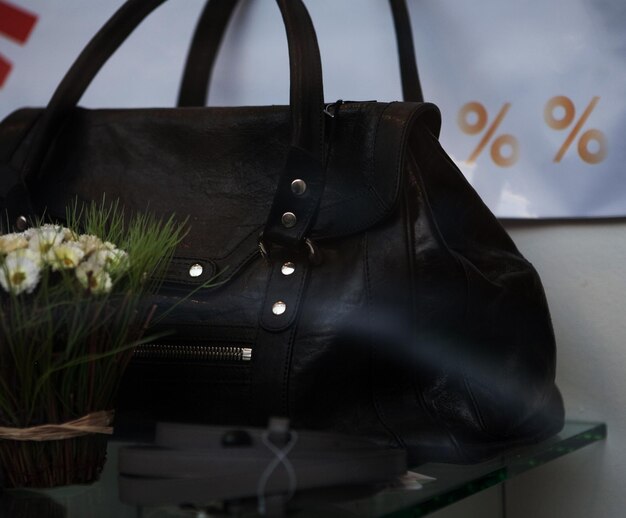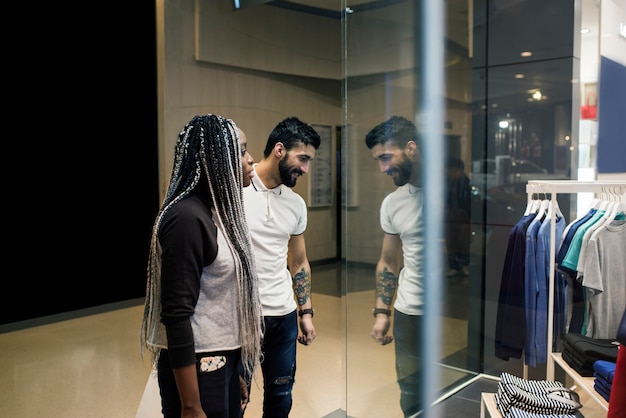Outlet Shopping 2025: Designer Fashion Up to 70% Off

The appeal of Outlet Shopping in 2025 lies in the thrill of securing high-end fashion pieces at a fraction of their original price.
With evolving retail strategies and smarter consumer behavior, outlets have transformed from simple discount centers into curated destinations for affordable luxury.
Understanding how to navigate this landscape is key to maximizing savings and style.
The Evolving Landscape of Outlet Shopping in 2025
In 2025, outlet shopping is no longer just about stumbling upon a bargain; it’s a sophisticated blend of digital savvy, strategic timing, and a keen eye for value.
The days of outlets being solely for past-season castoffs are largely behind us, as many brands now produce lines specifically for their outlet stores, offering unique pieces that blend current trends with classic aesthetics.
The global retail shift towards more sustainable and cost-effective consumption patterns has directly influenced the growth and appeal of outlet centers.
Consumers are increasingly environmentally conscious and budget-minded, leading them to seek out smart shopping opportunities that benefit both their wallets and the planet.
This consumer behavior has prompted luxury brands to adapt their strategies, ensuring that outlet experiences remain relevant and desirable.
Digital Integration in Outlet Shopping
One of the most significant transformations has been the deeper integration of digital tools. Mobile apps, geo-located promotions, and personalized alerts are now commonplace.
Shoppers in 2025 can expect to receive real-time notifications about flash sales, exclusive discounts, and even virtual queueing options, drastically enhancing the efficiency and effectiveness of their shopping trips.
- Personalized Deal Alerts: Many outlet centers and individual brands now offer apps that learn your preferences and send tailored discount notifications.
- Virtual Try-On Technology: Some outlets are experimenting with AR tools that allow you to virtually try on garments, reducing fitting room queues.
- Pre-Shopping Research Platforms: Websites and forums dedicated to outlet finds offer insights into inventory, upcoming sales, and even user reviews of specific outlet items.
This digital evolution means that the truly savvy shopper starts their outlet journey long before they even arrive at the physical location.
A well-prepared shopper understands that the best deals are often secured through a combination of online research and disciplined in-person execution.
Furthermore, the concept of “outlet tourism” continues to grow, with many centers becoming destinations in themselves, offering dining, entertainment, and even accommodation.
This elevates the shopping experience from a simple transaction to a full-day excursion, drawing in a wider demographic of visitors who might not initially have designer fashion as their primary objective.
The transparency that digital platforms bring also means consumers are more informed about pricing and product origins.
This encourages brands to maintain a certain standard for their outlet offerings, ensuring that the value proposition remains strong.
Successful outlet shopping in 2025 requires a blend of traditional retail awareness and modern technological fluency.
Strategic Planning for Maximum Savings
To truly unlock savings of up to 70% or more, haphazard shopping won’t suffice. Strategic planning is paramount.
This involves understanding sale cycles, leveraging loyalty programs, and knowing when to visit for the best selections and least crowds.
Historical data indicates that seasonal changes and major holidays often trigger significant discounts. Post-holiday sales, particularly after Christmas and Easter, frequently yield some of the deepest price cuts as retailers clear inventory.
Similarly, end-of-season clearances, such as late summer for spring/summer collections and late winter for autumn/winter lines, are prime opportunities.
Timing Your Visit
The sweet spot for outlet shopping is often during weekdays, early mornings, or late evenings.
Weekends and public holidays typically see larger crowds, which can make for a less enjoyable experience and increased competition for popular items.
Visiting during off-peak hours can result in a more relaxed atmosphere and more attentive service from sales associates.
- Mid-week Mornings: Best for avoiding crowds and ensuring a full stock of sizes and styles.
- Holiday Weekends (Strategic): While crowded, major holiday weekends often feature additional, planned sales events. Research specific store promotions in advance.
- End of Season: Target late summer (August) and late winter (February) for clearance on seasonal items.
Moreover, signing up for email newsletters from your favorite designer brands and the outlet centers themselves can provide early access to sales and exclusive coupons.
These often arrive a few days before public announcements, giving you a crucial head start.
It’s also beneficial to consider the “back-to-school” period in late summer and the “back-to-work” period after the new year. These times often lead to a refresh of inventory and targeted promotions on professional attire and accessories.
By aligning your visit with these commercial rhythms, you position yourself to capture the most significant discounts.
Preparation extends beyond just timing. Creating a wish list of specific items or categories before you go can help you stay focused and avoid impulse purchases.
Knowing what you need and what specific designers you are targeting makes the shopping process more efficient and less overwhelming when faced with extensive options.
Navigating Designer Outlet Collections
A common misconception about outlets is that they solely sell last season’s merchandise or items with minor imperfections.
While this can be true for some brands, many designer outlets in 2025 carry collections specifically manufactured for them, known as “made-for-outlet” or “diffusion” lines.
These collections are designed to meet a specific price point while still offering the brand’s aesthetic.
Understanding the difference between these lines and true overstock or past-season items is crucial for managing expectations and assessing value.
Distinguishing Real Bargains
How do you tell the difference? Look for subtle clues. Items specifically made for outlets sometimes have different care tags, unique internal coding, or slightly altered fabric compositions.
Genuine overstock or previous-season items will typically match the quality and labeling of their full-price counterparts.
- Quality Check: Always inspect stitching, fabric quality, and hardware. A true designer piece, even at a discount, should exhibit high craftsmanship.
- Labeling: Some brands use distinct labels for their made-for-outlet lines (e.g., a specific color label or a small dot). Research your preferred brands beforehand.
- Original Price Comparison: If an item is listed with an original retail price that seems unusually high for its quality, it might be a made-for-outlet item designed to show deep initial discounts.
It’s important to remember that “made-for-outlet” doesn’t necessarily mean lower quality, but it does mean a different value proposition.
These pieces can be excellent options for everyday wear or for trying out a designer aesthetic without a significant investment.
Furthermore, developing a keen eye for details can help you spot the very best deals. Sometimes, authentic runway samples or limited edition pieces make their way to outlets, especially during special clearance events.
These hidden gems are often highly sought after by savvy shoppers and collectors alike.
Don’t be afraid to ask sales associates about the origin of the merchandise.
While they may not always disclose every detail, a polite inquiry can sometimes yield valuable information about whether an item is genuine overstock or a dedicated outlet line piece.
Building a relationship with staff can also provide early access to new arrivals or special drops.

Leveraging Outlet Exclusive Programs and Services
Beyond sales and timing, many outlet centers and individual stores offer exclusive programs that can further enhance your savings.
These include VIP clubs, rewards programs, and services like personal shopping or tax-free shopping for international visitors.
Signing up for these programs is usually free and can grant access to additional percentage-off coupons, early notifications of sales, and even birthday discounts.
These seemingly small benefits can accumulate into substantial savings, especially when purchasing high-value items.
Maximizing Membership Benefits
Before you even arrive at the outlet, check the center’s website for a “VIP Club” or “Savings Passport” program.
Many offer a physical or digital coupon book upon sign-up, which can be presented at various stores for additional discounts on top of existing sales.
- Outlet VIP Clubs: Often provide exclusive coupon books or digital passes with extra discounts.
- Brand Loyalty Programs: Enroll in specific designer brand loyalty programs; purchases at outlets may count towards rewards or provide future discounts.
- Credit Card Perks: Certain credit cards offer cash back or bonus points on purchases made at outlet centers – check your card benefits.
Some premium outlets also offer concierge services, which can include luggage storage, stroller rentals, and information about local attractions, turning a shopping trip into a more convenient and pleasant experience.
For those looking to make a significant purchase, personal shopping services can save time and help locate specific items or styles.
International visitors should also inquire about tax-free shopping programs. Many countries offer VAT or sales tax refunds for tourists, which can add another layer of savings to already discounted designer goods.
Ensure you understand the specific requirements and documentation needed for these refunds.
Finally, keep an eye out for special event days. Outlets often host “Friends & Family” events, charity shopping days, or seasonal promotions that offer boosted discounts.
These events are usually advertised through their newsletters and social media channels. Participation in these events can translate into finding premium items at exceptionally low prices.
The Art of the Hunt: Tips for Successful Outlet Raids
The true joy of outlet shopping often lies in the “hunt”the thrill of discovering that perfect piece at an unbeatable price. To master this art, patience, a discerning eye, and a pragmatic approach are essential.
Firstly, arrive with an open mind. While having a wish list is helpful, being too rigid can lead to disappointment if specific items aren’t available.
Instead, focus on categories (e.g., “a classic handbag,” “a versatile trench coat”) rather than exact models.
What to Look For and How to Inspect
Inspect every item thoroughly. Outlets may have items that are returns, floor samples, or have minor cosmetic flaws. While these often come with deeper discounts, ensure any imperfection is something you can live with or easily repair.
- Check for Damage: Examine seams, zippers, buttons, and fabric for any tears, stains, or loose threads.
- Sizing: Outlet sizing can sometimes differ slightly from mainline stores. Always try items on, even if you know your size in a brand.
- Return Policy: Understand each store’s return and exchange policy. Outlet policies can vary significantly from full-price retail stores.
Consider timeless pieces over fleeting trends. While a trendy item at a deep discount might seem appealing, a classic designer piece (e.g., a well-made trench coat, a versatile leather bag) will offer more long-term value and wear, truly maximizing your savings over time.
Don’t be afraid to walk away. Sometimes, even with a great discount, an item might not be the right fit, the quality isn’t up to par, or you simply don’t love it. The best deal is one you’ll genuinely use and cherish.
Finally, wear comfortable shoes and dress in layers. Outlet centers can be vast, requiring a lot of walking, and temperatures can vary between stores and seasons. Being physically comfortable will allow you to shop longer and more effectively.

Beyond Apparel: Accessories, Footwear, and Home Goods
While fashion apparel often takes center stage at outlets, remember that designer savings extend far beyond clothing.
Accessories, footwear, jewelry, and even luxury home goods can be found at significant markdowns, offering opportunities to elevate your entire lifestyle.
Designer handbags and small leather goods are particularly popular outlet finds. These items often retain their value well and can serve as excellent long-term investments.
Footwear, from high-end sneakers to elegant heels, also represents a significant savings category.
Expanding Your Search
Don’t limit your outlet trip to just your primary wardrobe needs. Explore stores specializing in:
- Luxury Eyewear: Designer frames can be incredibly expensive at full price, but outlets often stock previous collections at steep discounts.
- Fine Jewelry and Watches: While fewer options, some designer outlets have dedicated jewelry stores offering significant markdowns on classic pieces.
- Premium Home Goods: Brands like Ralph Lauren Home, Williams Sonoma (sometimes), and other luxury linen or kitchenware brands often have outlet locations.
These categories can offer even more substantial savings percentages than ready-to-wear apparel, as their initial retail price points are typically higher.
A classic designer watch or a timeless leather wallet bought at 70% off can feel like a major victory.
For gifts, outlet shopping for accessories can be a smart move. A designer scarf, a pair of premium gloves, or a branded key holder acquired at a heavy discount makes for a sophisticated present without the premium price tag.
The key is to think broadly about what constitutes “designer fashion” and to explore every corner of the outlet center.
Consider items that are less size-dependent when shopping for deep discounts. Accessories like scarves, wallets, belts, and sunglasses have wider fit ranges, making them easier to purchase for yourself or as gifts.
This also reduces the risk of having to return an item due to sizing issues, common with clothing and footwear.
Sustainable Shopping and the Outlet Model
In 2025, the conversation around sustainable consumerism is more prevalent than ever.
Outlet shopping, when approached thoughtfully, can align remarkably well with principles of sustainability by extending the lifecycle of products and reducing waste.
By purchasing items that might otherwise be overstock or past-season, consumers help prevent perfectly good merchandise from ending up in landfills. This contributes to a circular economy model where resources are utilized more efficiently.
Conscious Consumption at Outlets
Choosing quality over quantity is a core tenet of sustainable fashion. Investing in a designer piece, even from an outlet, often means acquiring an item built to last, reducing the need for frequent replacements.
This longevity reduces your overall environmental footprint.
- Longevity: Designer items are often made with higher quality materials and construction, ensuring a longer lifespan.
- Reduced Waste: Buying unsold inventory prevents it from becoming textile waste.
- Avoiding Fast Fashion: Outlets offer an alternative to the rapid turnover of fast fashion, encouraging more thoughtful purchases.
Furthermore, many brands are becoming more transparent about their manufacturing processes and material sourcing.
Even at outlets, customers can seek out brands that align with their ethical values, further integrating sustainability into their shopping habits.
The act of “hunting” for the right piece at an outlet also encourages more mindful consumption rather than impulsive buying.
It requires intention and research, leading to purchases that are more likely to be cherished and used for years to come.
By supporting outlet centers, consumers also contribute to a retail model that makes high-quality goods more accessible to a wider demographic, democratizing luxury and promoting a more inclusive approach to fashion consumption.
This reflects a broader trend towards value-driven purchasing in 2025, where price, quality, and ethical considerations are increasingly intertwined.
| Key Point | Brief Description |
|---|---|
| 🛍️ Digital Savvy | Leverage apps and online research for deals and insights. |
| 🗓️ Strategic Timing | Shop during weekdays, off-peak hours, and major seasonal sales. |
| 🧵 Quality Assessment | Inspect items for craftsmanship and distinguish between different lines. |
| ♻️ Sustainable Choice | Outlets promote longevity and reduce waste, supporting conscious purchasing. |
Frequently Asked Questions About Outlet Shopping in 2025
Not always. While some outlet items are genuine overstock, many designers also create “made-for-outlet” collections. These items are designed to meet a lower price point and may have slight differences in materials or construction, but still embody the brand’s aesthetic.
The periods immediately following major holidays like Christmas and Easter, as well as end-of-season clearance sales (typically late summer for spring/summer and late winter for autumn/winter collections), usually offer the most significant markdowns at outlet centers.
Many outlet centers and brands now have mobile apps that provide real-time deal alerts, personalized coupons, and information on new arrivals. Engaging with these digital tools and signing up for email newsletters can give you a significant advantage in finding exclusive promotions.
Yes, return policies at outlet stores can often be stricter or different from mainline retail stores. It’s crucial to inquire about the specific return and exchange policies for each store before making a purchase to avoid any issues later on.
Absolutely. Beyond apparel, designer outlets often offer significant savings on accessories like handbags, shoes, eyewear, and sometimes even luxury home goods. These categories frequently provide excellent value, often with substantial percentage off initial prices.
Conclusion: The Future of Outlet Shopping as a Lifestyle Experience
Mastering Outlet Shopping in 2025 is about more than chasing discounts — it’s about strategy, sustainability, and smart luxury acquisition.
With premium outlets like Belmont Park Village gaining attention for curated designer experiences (as highlighted by The Hollywood Reporter’s retail review:
https://www.hollywoodreporter.com/lifestyle/shopping/best-belmont-park-village-outlet-stores-events-shopping-1236386398/) and exclusive markdown events such as the Kate Spade Outlet Peanuts Collection price drop (reported by Syracuse.com: https://www.syracuse.com/shopping/2025/10/kate-spade-outlet-has-new-markdowns-on-the-fan-favorite-peanuts-collection.html), shoppers now have direct access to designer pieces at lifestyle-friendly pricing.
Adopting a well-informed approach means not just buying — but curating. When combined with tech alerts, loyalty stacking, and timing precision, Outlet Shopping becomes a refined art form. And in 2025, the smartest shoppers aren’t just saving money — they’re building wardrobes with intention.
Liked the article?





